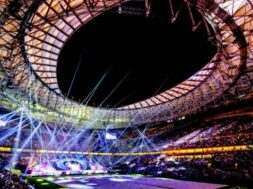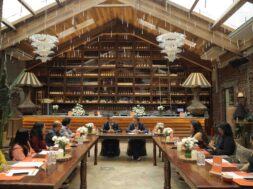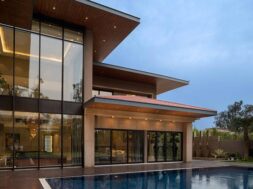
WONDERFUL WORLD CUP STADIUMS
The astonishingly spectacular architecture of Qatar’s eight custom-designed stadiums delivers a magnificent experience for football fans from the first game to the last.
In the middle of many hardships, Qatar successfully hosted the most popular sporting event in the world: the FIFA World Cup. As a result of such a large scale event, Qatar might gain several benefits that extend far beyond the sporting business. It was the first time since 2010 that a Middle east Country hosted the FIFA World Cup 2022. Qatar previously hosted the FIFA World Cup in 2010 but unfortunately garnered mixed responses owing to various global factors. The event was officially launched by King Sheikh Tamim bin Hamad Al Thani in the presence of other dignitaries. Vice-President of India Jagdeep Dhankhar was also at the world cup inauguration ceremony. Below are some quick itineraries of stadiums specially designed for thief World Cup 2022.
Lusail Stadium :
The Lusail Stadium hosted ten matches during the FIFA football World Cup2022, including the final. Foster +Partners, in collaboration with structural engineer Arup and Sports Architect Populous have designed the project. The Lusail stadium’s form resembles a golden bowl. The 80,000-seat stadium is located north of the Qatari capital Doha in Lusail. Wrapped in a golden facade, it was designed to be a magnificent addition to the emerging town.

Stadium 974 :
Fenwick Iribarren Architects developedStadium 974 in Qatar in preparation for the FIFA 2022 World Cup, which is entirely made of colourful shipping containers and a modular steel structure.
The 40,000-seat sporting complex, known initially as Ras Abu Aboud, is the first FIFA World Cup stadium to be completely demountable.
Fenwick Iribarren Architects in Spain collaborated with structural experts Schlaich Berger Mann Partner and engineering firm Hilson Moran to create Stadium 974. Its modular design incorporates repurposed shipping containers and recycled steel from the skyscraper. Furthermore, due to its modular design, less time, money, and material were wasted during construction.

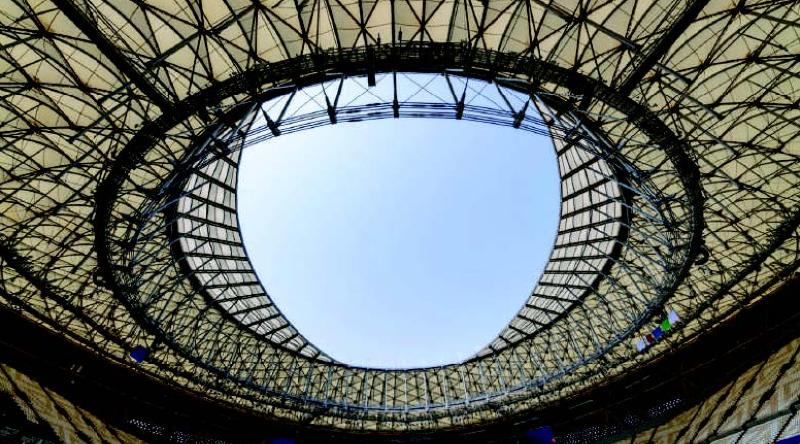 The Khalifa International Stadium :
The Khalifa International Stadium :
Since opening in Doha 46 years ago, the Khalifa International Stadium has hosted several major events, including the Arabian Gulf Cup, the Asian Games, and the IAAF World Athletics Championships. Inside, major changes to the stadium include the addition of12,000 seats in its upper tiers. Several hospitality facilities have also been introduced. It is located 10 kilometres from Doha’s city centre. It forms part of the Aspire Zone, an area created for the 2006 Asian Games that includes a park, aquatics centre, and multipurpose sports hall.
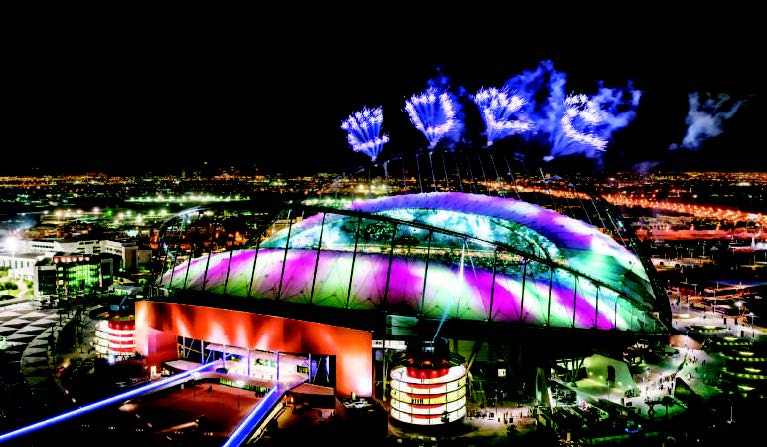
Al Wakrah Stadium :
The stadium designed by Zaha Hadid Architects is the first of four new venues being built for the football tournament in 2022.The Al Wakrah Stadium, a stadium for the 2022 FIFA World Cup in Qatar, was completed by Zaha Hadid Architects. The40,000-seat stadium, located about 10 miles south of Doha, was inaugurated with the Amir Cup final between Al Sadd and Al Duhail.

Al Bayt Stadium :
Multidisciplinary studio Dar Al-Handasah has completed the60,000-seat Al Bayt Stadium in the Qatari city of Al Khor for thief 2022 World Cup. Set to host the football tournament’s opening game next November, the stadium is defined by its distinctive tent-like structure. Built-in the northern port city of Al Khor, the Al Bayt Stadium was named after the historic Bayt al Sha’ar tents traditionally used by nomadic people in the country and across the region. Following the tournament, the upper tier of seating in the stadium was removed, reducing the venue’s capacity to 32,000.According to the tournament’s organisers, these stands will be donated to help create sporting facilities in other countries.

AL Thumama Stadium :
The Al Thumama Stadium in Doha,designed by Qatari architect Ibrahim M.Jaidah and based on a gahfiya cap, has been inaugurated ahead of the FIFA 2022World Cup. The 40,000-capacity stadium in the south of Doha is the sixth tournament ready venue to be completed ahead of the World Cup, which is scheduled to take place in Qatar next year.
AL Thumama Stadium has been completed ahead of the World Cup. The stadium, named Al Thumama Stadium after a locally found tree, has a distinctive circular form. Jaidah designed it, the chief architect of the Arab Engineering Bureau, to look like a gahfiya, a traditional woven head covering worn by men throughout the Middle East.

Ahmad Bin Ali Stadium :
The Ahmed Bin Ali Stadium in Al Rayyan, which hosted the sport onan artificially cooled pitch during thief 2022 World Cup in Qatar, opened exactly two years before the football tournament began. Known as the gateway to the desert, the 40,000-seat stadium on the western edge of the Doha metropolitan area was designed by UK architecture studio Pattern Design. The stadium, which hosted seven matches during the tournament, was inaugurated on 18 December by hosting the final of the Amir Cup. It is located on the edge of the desert. Around the stadium are numerous curved concession stands that take their forms directly from the dunes in the adjacent desert.

Education City Stadium :
Fenwick-Iribarren Architects and Pattern Design have unveiled the Education City Stadium near Doha, the third and largest of the venues for the FIFA 2022 World Cup in Qatar to be completed so far. Nicknamed the “Diamond in the Desert “due to its distinctive cladding, the45,350-seater stadium is one of eight venues that hosted FIFA 2022.
The stadium has been awarded a five-star rating for sustainability from the Global Sustainability Assessment System. The 2022 FIFA World Cup was a once-in-a-lifetime opportunity for Qatar to present itself globally. It provided a forever mark to it with the world’s most-watched athletic event.
Qatar’s government and authorities make the most promising use of this opportunity to enhance its fundamental infrastructure and add solidity to its economy. Doha aspires to exhibit its cutting-edge transit infrastructure, a world-class tourism and culinary experiences, thriving arts and culture sectors, and friendly and gracious hospitality throughout the event.


